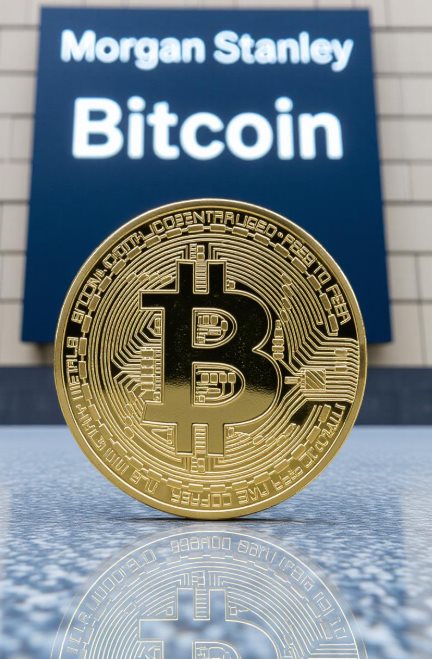Global investment titan Morgan Stanley has officially recommended that investors allocate between 2–4% of their portfolios to Bitcoin, marking another milestone in institutional acceptance of digital assets. The bank’s Global Investment Committee (GIC), overseeing more than $1.3 trillion in assets, believes Bitcoin can play a significant role in diversifying modern investment portfolios, particularly in the era of alternative financial instruments like altcoins.
A Vote of Confidence from Wall Street
This move from Morgan Stanley underscores a growing shift in perception among traditional financial institutions. Once viewed as a speculative niche market, Bitcoin—and by extension, the broader altcoin ecosystem—is increasingly being recognized as a legitimate asset class that can enhance portfolio performance while managing long-term risk.
According to the GIC, Bitcoin’s risk-return characteristics and historically low correlation to traditional assets like equities and bonds make it a valuable portfolio addition. By recommending a 2–4% Bitcoin allocation, the committee suggests that investors can benefit from exposure to the digital asset’s upside potential while limiting volatility through diversification.
Why Bitcoin Is Entering Institutional Portfolios
Morgan Stanley’s endorsement is driven by several key factors that are reshaping the global financial landscape:
- Institutional acceptance: The rise of regulated Bitcoin ETFs in major markets has made it easier for large investors to gain exposure without direct custody risks.
- Macro uncertainty: With ongoing inflation and fluctuating interest rates, Bitcoin is increasingly viewed as a hedge against fiat currency depreciation and economic instability.
- Technological evolution: The broader blockchain ecosystem—spanning Bitcoin and various altcoins—continues to attract attention for its innovation, transparency, and decentralization.
The GIC’s recommendation sends a strong signal to conservative investors who have yet to explore digital assets. It implies that exposure to Bitcoin and, by extension, potential allocations to altcoins, may no longer be just a frontier investment but a prudent component of wealth management strategies.
Bitcoin’s Role Amid the Rise of Altcoins
While Morgan Stanley’s current focus is primarily on Bitcoin, the decision indirectly validates the entire altcoin market. As institutions begin to acknowledge Bitcoin as a store of value, attention often expands to include altcoins that serve different use cases—such as smart contracts, decentralized finance (DeFi), and tokenized assets.
The integration of Bitcoin into traditional portfolios could pave the way for more structured investment products that include Ethereum, Solana, and other leading altcoins in the near future. As the lines between traditional and digital assets continue to blur, investors may begin seeing balanced allocations that mix conventional equities with a basket of altcoin-based opportunities.
A Major Shift in Investment Strategy
Morgan Stanley’s approach aligns with a trend seen across the financial world, where top-tier banks, hedge funds, and family offices are gradually increasing their exposure to digital assets. Institutions that once dismissed blockchain technology are now reshaping their strategies to include it as a core element of diversification, risk management, and future growth.
In recommending a moderate allocation of 2–4%, the GIC maintains a balanced view: Bitcoin should not dominate portfolios but should complement other asset classes. This percentage signals both caution and conviction—acknowledging Bitcoin’s volatility while recognizing its transformative potential within global markets.
Looking Ahead: The Road to Broader Adoption
Should mainstream adoption continue, institutional positions like Morgan Stanley’s could accelerate the widespread integration of altcoins into global finance. As more wealth managers follow this model, Bitcoin’s presence across portfolios could normalize alternative asset investing and open the door for regulated altcoin funds and diversified blockchain ETFs.
For investors watching the next chapter of financial evolution unfold, Morgan Stanley’s recommendation is more than a portfolio strategy—it’s a statement. Traditional finance is no longer ignoring or resisting the impact of altcoins and blockchain innovation; it’s adapting to include them. With Wall Street’s growing recognition, the path toward a digitally diversified world of finance is becoming clearer than ever before.

Leave a Reply